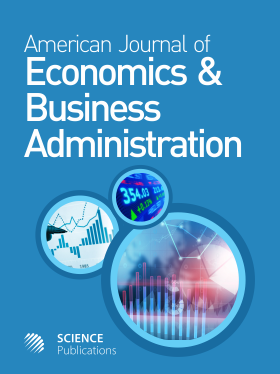The Malaysian Public Procurement's Prevalent System and its Weaknesses
- 1 University Technology MARA, Malaysia
- 2 Bank Negara Malaysia, Malaysia
- 3 Investigation Division, Malaysia
- 4 Finance and Procurement Division, Malaysia
- 5 University Putra Malaysia, Malaysia
Abstract
Problem statement: This study examined the public procurement system as prevalent in the Malaysian government system of administration. Various aspects of public procurement are outlined including types and the processes that entail public procurement. This study also highlighted the weaknesses in the manual public procurement processes that are opened to potential abuse and mismanagement resulting in corruption. This study places the Malaysian Government public procurement system under the spotlight zeroing on allegations of abuse, tampering and corrupt practices. The study concluded that the large amount of funds allocated to public procurement coupled with excessive human intervention opportunities opened avenues that increase the risk of system abuse, profiteering and corruption. Case studies on the abuse and corruption of the public procurement system highlight the need for the Malaysian Government to eliminate the loopholes in the system, arrest the rot and implement a transparent, efficient and accountable public procurement system. Approach: Documents from the Ministry of Finance on public procurement including, among others, the Procurement Guideline Book, The Financial Procedures Act 1957, the Treasury Instructions (TI) and the Treasury Circular Letter (TCL) were scrutinized in studying the Malaysian Government public procurement system, its various attributes, types and processes that reflect a diversified approach to public procurement. Three case studies were cited to illustrate the susceptibility of the system to abuse and corruption. Results: Despite claims of openness and transparency of the public procurement system, it was found the current system is replete with the risk of abuse, unethical manipulations and corrupt practices. This research is limited to the analysis of data and processes related to the Malaysian Government public procurement system. The sensitivity of the subject may inhibit the collection of empirical data via surveys or interviews. Records of court cases involving corruption offered clues to areas in the system prone to human intervention. Conclusion: This research helps identify areas of improvement in the Malaysian Government public procurement system and thus raises the possibility of enormous cost savings and the eradication of rampant corruption and abuse. This study shows that, while the public procurement system may be available in the Malaysian Government system of administration, weaknesses in the public procurement processes may open avenues for corruption to take place. Corruption stemming from a procurement system weak on aspects of ‘check and balance’ will cause a major drain on the national budget and can result in a huge loss of public funds. Eventually, the nations credibility in the eyes of the international business community will be severely tainted thus reducing the overall competitiveness of the country.
DOI: https://doi.org/10.3844/ajebasp.2010.6.11

- 8,567 Views
- 10,587 Downloads
- 15 Citations
Download
Keywords
- Procurement
- Public procurement
- public procurement processes
- risks in public procurement
